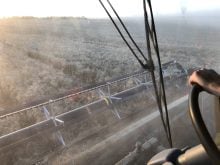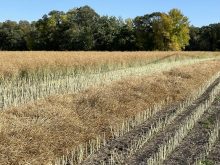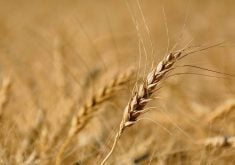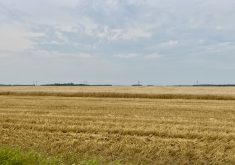This year, many producers seeded late because of cold, wet weather and this may lead to a late harvest. Researchers at the Canadian Grain Commission (CGC) believe that if there is a late harvest coupled with significant rain or moisture there could be an increased possibility of significant levels of sprout-damaged grain this fall.
Sprout damage is a grading factor in Canadian wheat. When kernels begin to sprout, they release an enzyme that breaks down the starch in wheat kernels, damaging its milling quality and changing how it performs in processing.
Read Also
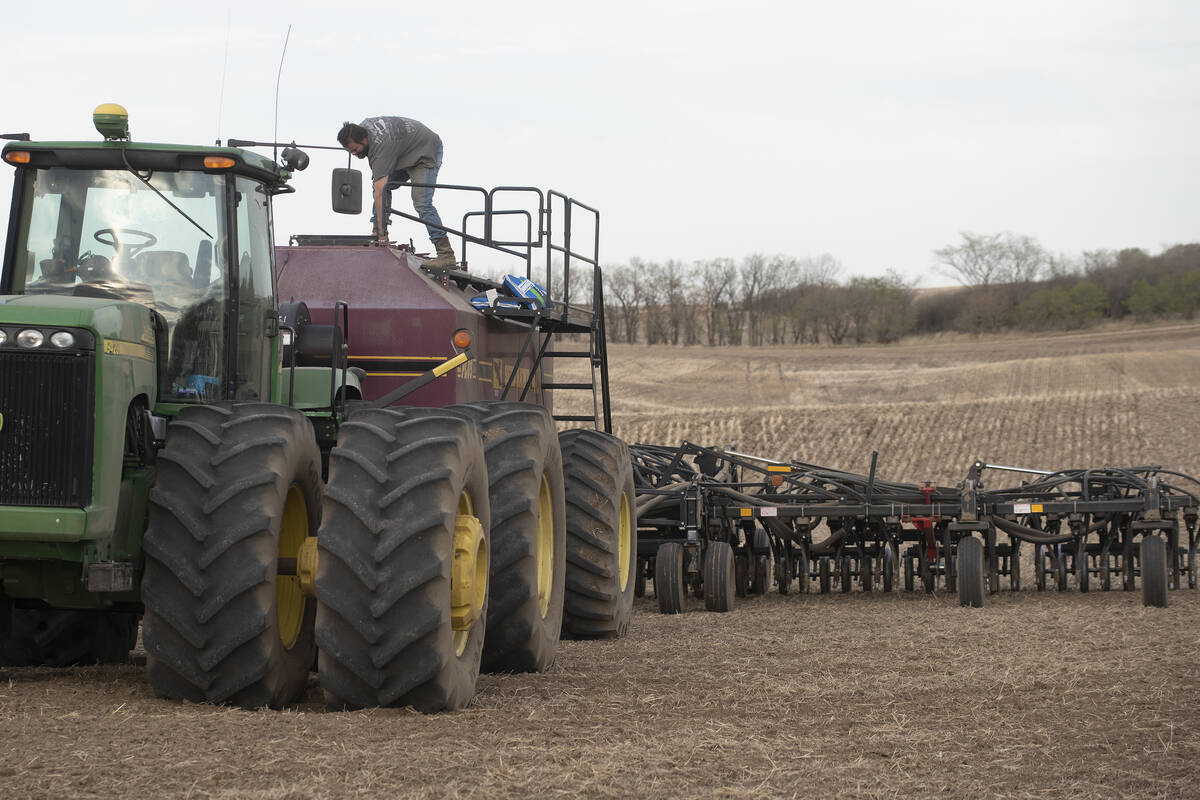
Nutrien pays farmers for efficient nitrogen
Nutrien’s Sustainable Nitrogen Outcomes (SNO) program pays Prairie farmers to limit nitrogen loss and, therefore, fertilizer-related greenhouse gas emissions.
Canadian grain grade standards are based on scientific research. Sometimes, based on results of scientific research conducted at the CGC, changes are made to grade standards. Under its mandate the CGC establishes, reviews and updates grain grade standards. The CGC supports improvements to grading standards and methods used to assess grading factors as long as these improvements are achievable and appropriate for the Canadian grain industry.
The grain industry has asked for an objective, efficient way to measure sprout damage on-site at primary, transfer and terminal elevators in order to help maintain the accuracy of the Canadian grading system. The CGC is open to exploring alternative methods as part of its mandate to establish, maintain and update grain grades.
VISUAL ASSESSMENT
Currently, CGC inspectors assess sprout damage visually. That is, they look at wheat samples and visually determine how many kernels appear to be sprout damaged. According to the CGC’s Official Grain Grading Guide, kernels are sprouted if one of the following conditions exists:
Kernels show clear evidence of growth in the germ area.
The bran is noticeably split over the germ from apparent growth.
The germ is missing and there is apparent greyish discolouration normally attributable to sprouting.
The germ, though intact, appears distinctly swollen as a result of sprouting activity.
Visual assessment is an effective method for determining sprout damage in wheat, particularly in elevator and port settings. However, it can be time consuming for an inspector to find all of the sprout-damaged kernels in a sample. As well, it does not offer an accurate picture of the level of enzyme activity in the sample.
Many customers of Canadian wheat understand sprout damage through a measurement called falling number and may ask for the falling number value of the Canadian wheat they buy.
FALLING NUMBER
Falling number refers to the amount of time in seconds it takes for a stirrer on an instrument to fall through a slurry of ground wheat. A higher falling number indicates that there is not much sprout damage. Falling number is used only for analytical purposes and represents a measurement of enzyme levels. Falling number is not a grading factor at this time and it cannot be used to replace any grading factor other than sprout damage.
Currently, falling number is usually measured using the Hagberg test method. This method is an objective method, but it can only be performed easily in a laboratory setting, making it logistically inappropriate for use on-site at primary, transfer and terminal elevators.
RVA TECHNOLOGY
The CGC and other industry partners are actively collaborating on research looking at using Rapid Visco Analysis (RVA) technology to determine falling number in Canadian wheat. The goal of the research is to decide if it would be appropriate to use RVA testing at primary elevators.
Like the Hagberg test, RVA testing is an objective method to assess sprout damage. The equipment has been designed to be easy to use and it may be possible to use it outside of a laboratory. As well, the RVA test can be performed in approximately half the time of the Hagberg falling number test, an important consideration in high-throughput conditions.
While results of this research have been promising, the CGC has not made a final decision about the use of this technology. The CGC will not move ahead with this technology until sound science supports it.
At this time, there is no plan to use falling number as a grading factor. Visual assessment of sprout damage will continue to be the standard practice. Research into the use of RVA technology continues and any change made to how the industry currently tests falling number will only be adopted if it is cost effective, feasible and based in science.


